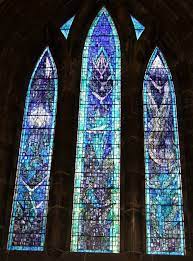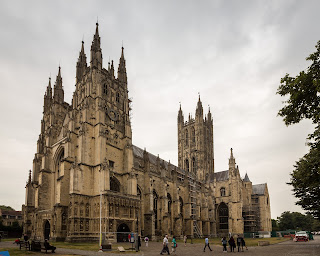A treasure of a tapestry triptych
We can hardly believe it, but our daily steps have taken us as far as Glasgow and our 'local' cathedral - only 23 miles from home.
While we may only have visited some of the others on our route, 'virtually' through this charity walk, most of the choir (and perhaps our readers) will have spent some time in this particular sacred space.
Glasgow Cathedral stands near the heart of Scotland's largest city. It is the only medieval cathedral on the Scottish mainland to have survived the Protestant Reformation of 1560 virtually intact, so the building you see remains relatively unchanged. Around it there used to be a chanory, a precinct where the bishop (and later the archbishop) and clergy lived. It dates back to the later 12th century.
The building is a superb example of Gothic architecture with its high arches and beautiful stained glass.
The history of the cathedral is linked with that of the city itself and is allegedly located where the patron, St Mungo, built his church. The tomb of the saint lies in the lower crypt.
In the crypt hangs a tapestry triptych designed in the 1970s by Robert Stewart, an inspiring teacher, and a very prolific artist and designer. This project was to prove his most demanding site-specific work. It entailed a careful study of the site for which he constructed a model to ensure that the design submitted worked with the constraints of the building and enhanced the space. The result is probably his most impressive work.
In the tapestry, very ancient symbols are linked with and unified by the central representation of the church; all the elements are inter-related and the position of each symbol contributes to the meaning of the whole.









Comments
Post a Comment